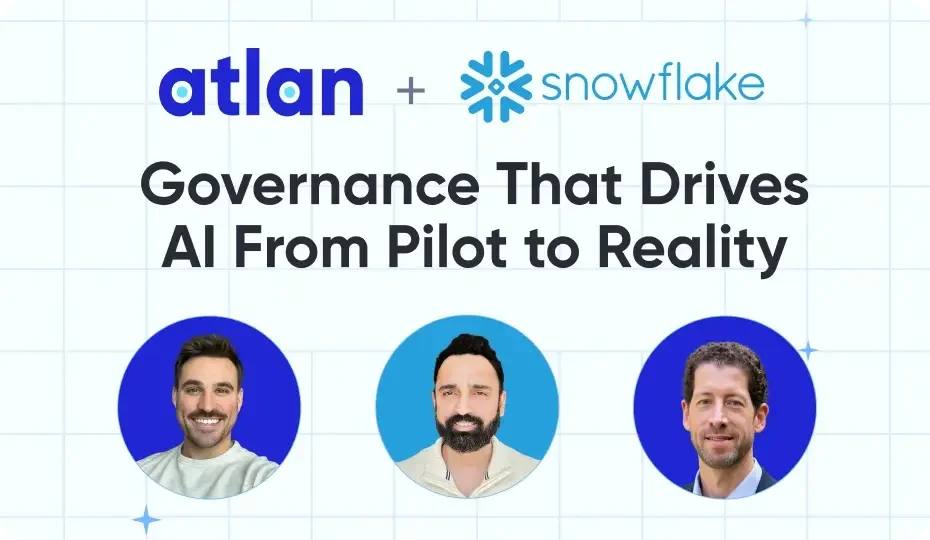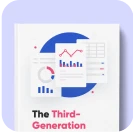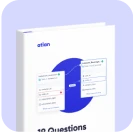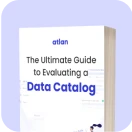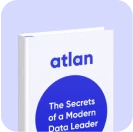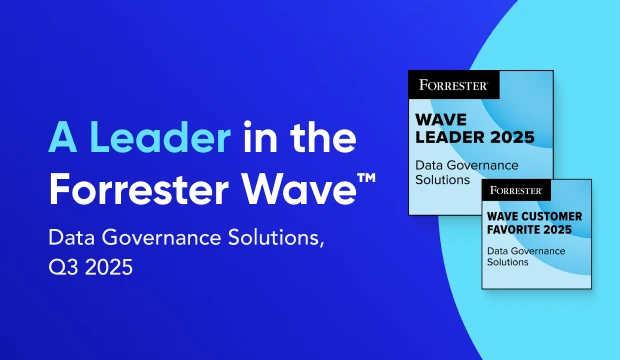AI Augmented Governance Policy Lifecycle: How to Implement
Share this article
Data governance policies are essential for maintaining your data system’s quality, compliance, and safety. However, many organizations struggle to advance these policies effectively, resulting in significant value loss: According to a 2020 Gartner report, poor data quality costs organizations an average of $12.9 million every year.
See How Atlan Simplifies Data Governance – Start Product Tour
AI systems can help your organization develop and maintain effective data governance policies while unlocking greater value from your data assets through automated policy lifecycle management. This article explores:
- The data governance policy lifecycle
- How AI enhances governance processes
- How Atlan can help you implement an AI-augmented data governance policy lifecycle.
Table of Contents #
- The standard data governance policy lifecycle
- Obstacles to the data governance policy lifecycle
- The benefits of an AI augmented governance policy lifecycle
- How Atlan supports an AI augmented governance policy lifecycle
- Conclusion
- Related reads
The standard data governance policy lifecycle #
Data governance policy development follows a four-stage lifecycle:
- Discuss and develop. In this stage, you talk with stakeholders around your organization to:
- Identify data governance issues and plan solutions;
- Look for supporting tools; and
- Define the metrics that you will use to assess the impact of your policy.
- Deploy and implement. In this stage, you work directly with teams to
- Onboard teams to your new policy;
- Train them to use any tools you have brought in to support it; and
- Introduce changes one at a time, gathering at least a month’s worth of data to assess the impact of each change.
- Observe and assess. This evaluation stage is where you
- Gather all the metric data collected over the new policy deployment period; and
- Track trends in that data to assess the impact of your governance policy on the issues you originally identified.
- Review and regroup. In this final stage, you discuss the results and decide how to proceed.
- If the policy didn’t have the expected impact, consider what went wrong and build a new policy initiative to work through the process again.
- If the policy was successful, discuss next steps and future goals to continue your policy development process.
Following the data governance policy lifecycle lets you continually update, adjust, and advance your data governance policy, improving data quality, trust, and security. The result? Unlocking the value in your data assets by eliminating information silos, increasing collaboration, and building organization-wide confidence in your data.
Obstacles to the data governance policy lifecycle #
Data governance policy development can run into any number of obstacles. The three most common problems include:
- Tool issues arise when teams don’t interface with governance tools available to them, often due to an overly complex tool or a lack of sufficient data governance training.
- Tool issues risk wasting the tool’s investment price while also failing to capture the gains you were looking for by adopting it in the first place.
- Policy adoption problems happen when teams don’t engage with your organization’s governance policies; the cause can be unawareness or a lack of team buy-in.
- Policy adoption issues open the door for governance violations, which can lead to compliance failures and legal repercussions
- Information silos happen when information isn’t being shared between teams, which can happen due to organizational structure or the lack of collaborative tools
- Information silos lead to a fractured governance process — while time and resources are wasted as different teams rebuild assets that already exist.
All of this drags on data quality and harms data trust.
The benefits of an AI augmented governance policy lifecycle #
Luckily, AI offers new possibilities for data governance policy development. An AI-augmented governance policy lifecycle can help you manage data at scale, creating the large, high-quality data sets that your AI applications need while also remaining compliant with all applicable standards and regulations.
An AI augmented governance policy lifecycle can improve data governance through:
- Automated tagging and documentation suggestions
- Natural language queries and automated SQL generation
- Policy development assistance
Let’s look at each of these in detail.
Automated tagging and documentation suggestions #
Documenting and tagging data assets are core functions of good data governance:
- Documentation makes it easier for users to discover and use data.
- Tagging identifies the classification level of data so that you can manage user data in compliance with regulations such as GDPR.
As data volumes explode, though, thoroughly documenting and tagging data becomes more challenging and time consuming. This is one area where AI can provide clear business benefits.
Automated documentation suggestions use past data to provide suggested descriptions for new tables and fields as they arrive in the system.
- A good AI-driven documentation assistant can help your data stewards document up to 70% of your company’s data estate.
Similarly, automated metadata management systems can generate tags using AI tools that track relationships between data assets in your system.
- Automatic tagging lets you scale your governance operations without getting bogged down in metadata creation processes.
Natural language queries and automated SQL generation #
Data engineers and data analysts are comfortable using SQL to query relational data. However, many business users are not familiar with SQL or don’t feel confident in their knowledge. This creates a technical barrier between technical staff and business users when it comes to finding, using, and managing data.
Beyond this fundamental divide, not all data these days is relational and numerous variants of non-relational data (like data lakes and data warehouses, and other alternative non-SQL data layouts) have emerged. Asking business users to keep up with these differences — and knowing how and when to use which — makes that barrier even higher.
AI, however, can banish such barriers.
AI data governance tools offer natural language interfaces in the form of AI-powered chat agents. Think of this as ChatGPT for your data, making governance tools as easy to use as any search engine.
- When data tools are accessible to every user in your organization, regardless of technical skill, your teams can effortlessly adopt those tools into their daily workflows — building governance into your operations.
- With natural language queries, business users don’t have to remember the four tables they need to join to get Q4 leads data. Instead, they can ask the question in their native language and leave the technical implementation details up to AI.
- For users (such as data engineers) who do know SQL, AI can generate initial drafts of complex SQL JOIN statements. That reduces the time engineers need to spend tweaking their code.
Policy development assistance #
In a modern data governance system, policies aren’t rigid, static documents that users must memorize and obey. They’re living assets that can contain data assets and the approval workflows that govern the creation, alteration, and access of key data products.
For example, in an AI-augmented governance policy workflow:
- Users can draft initial policy statements from a user prompt.
- Data stewards can then polish and publish the new policy within minutes.
- As a result, data policy co-pilot functions significantly speed up policy creation by streamlining the process between concept and reality.
How Atlan supports an AI augmented governance policy lifecycle #
Atlan is a modern data catalog powered by AI and used by leading firms like Nasdaq, Cisco, and Dropbox. Atlan’s AI systems are designed to support the development of governance policy from start to finish:
- Atlan’s data catalog uses AI to auto-generate metadata tags, allowing you to scale your data while keeping it discoverable and governed.
- Atlan’s natural language search function acts as a “Google for your data,” breaking information silos by making it easy for your teams to find, share, and understand data assets.
- Atlan’s AI-assisted policy creation lets you write and connect policies in minutes. With Atlan’s streamlined governance policy system, you can accelerate your policy lifecycles, building the value of your data assets.
- Atlan’s transparency center provides a real-time view of policy coverage, incidents, and breaches, keeping your governance active and visible. Combined with automated metadata and assisted policy creation, Atlan lets you quickly and easily develop your governance policy while tracking its impact from moment to moment.
Conclusion #
Data governance policy follows a lifecycle of discussion, deployment, observation, and reflection that advances data quality and trust over time. However, this process often runs into issues with tools, adoption, and information silos.
AI can automate metadata generation and policy tracking, enabling governance at scale. It can provide natural language interfaces that improve engagement with tools and make data discovery and sharing easy.
Atlan’s AI-powered search and policy creation tools streamline the policy lifecycle, letting you accelerate your governance policy development while breaking information silos and fostering collaboration. See what Atlan can do for you by booking a demo today.
AI Augmented Governance Policy Lifecycle: Related reads #
- What is Data Governance? Its Importance & Principles
- Data Governance and Compliance: Act of Checks & Balances
- Data Governance Framework — Guide, Examples, Template
- Data Compliance Management in 2025
- BCBS 239 Compliance: What Banks Need to Know in 2025
- BCBS 239 Data Governance: What Banks Need to Know in 2025
- BCBS 239 Data Lineage: What Banks Need to Know in 2025
- HIPAA Compliance: Key Components, Rules & Standards
- CCPA Compliance: 7 Requirements to Become CCPA Compliant
- CCPA Compliance Checklist: 9 Points to Be Considered
- How to Comply With GDPR? 7 Requirements to Know!
- Benefits of GDPR Compliance: Protect Your Data and Business in 2025
- IDMP Compliance: It’s Key Elements, Requirements & Benefits
- Data Governance for Banking: Core Challenges, Business Benefits, and Essential Capabilities in 2025
- Data Governance Maturity Model: A Roadmap to Optimizing Your Data Initiatives and Driving Business Value
Share this article

